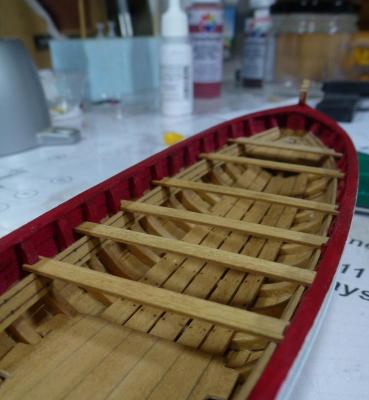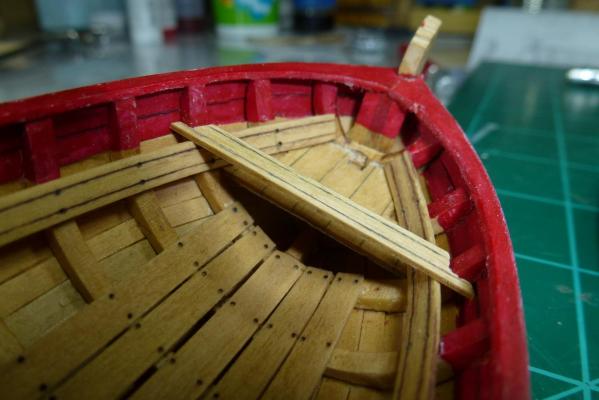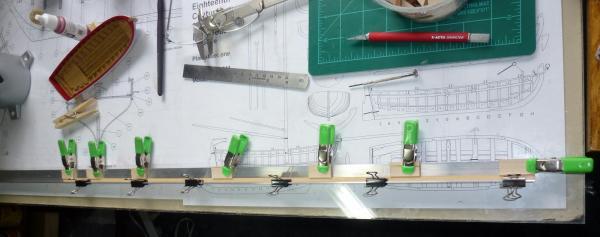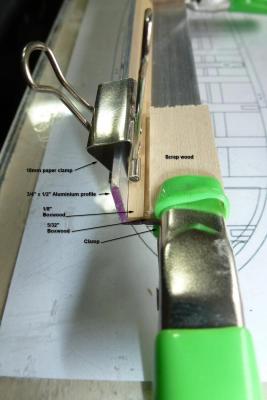-
Posts
5,446 -
Joined
-
Last visited
Content Type
Profiles
Forums
Gallery
Events
Everything posted by Nirvana
-
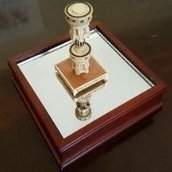
Model workshop layouts
Nirvana replied to StebbinsTim's topic in Modeling tools and Workshop Equipment
Tim, see the pm I sent. -

3D printer at Home Depot
Nirvana replied to twintrow's topic in CAD and 3D Modelling/Drafting Plans with Software
I can see many areas these type of machines can be useful, but for ship modeling? As for standards we are looking for, I have a hard time to imaging the 1000 dollar machine will deliver the quality and details we are looking for. Now here are some questions; As for learning how to create the small 3D piece to manufacture at homebase: Is it worth the learning curve of software for the items we look for? Is it worth the cost of filament that each machine demands? (Each detail has to get a final finish) Is it worth the cost of trial and error, even though the 3D software says one thing? Is it worth the time working the machine instead utilizing the time towards the model you are building? Is the final finish of the part worth all the time and effort and cost? Again just my two cents, I do believe the 3d printing maching will have a market ..... later on, what I have seen is promising! I don't want to step on any-ones toes, but the bottom line, I think what we have of today of mechanical machines type Byrnes will satisfy many of us, this along with hand tools. -
Antanas, again a fantastic build. Very nicely done.
- 13 replies
-
- 95mm boat
- master korabel
-
(and 1 more)
Tagged with:
-
Thank you Chuck, I am trying to give this longboat the right justice for it's detail. Thanks again for creating this kit for us!
- 335 replies
-
- 18th century longboat
- Finished
-
(and 1 more)
Tagged with:
-

3D printer at Home Depot
Nirvana replied to twintrow's topic in CAD and 3D Modelling/Drafting Plans with Software
I certainly can, in my defence which is weak, I will still be holding a tool or material to be fed. I know I will be attacked for this because the software being used with the printer is considered a tool. And a person has to design the item he or she wants to get printed. You need to be able to understand at least the basics in 3d design. Just my 2 cents. -
Most thwarts in place, only two unglued and the one between G and H missing. Slowly progress but I enjoy all the trimming that comes along with each part.
- 335 replies
-
- 18th century longboat
- Finished
-
(and 1 more)
Tagged with:
-

3D printer at Home Depot
Nirvana replied to twintrow's topic in CAD and 3D Modelling/Drafting Plans with Software
Check this website for "hobby 3D printer" Dremel is not mentioned at all. -

3D printer at Home Depot
Nirvana replied to twintrow's topic in CAD and 3D Modelling/Drafting Plans with Software
Tom, I am off half day tomorrow and will go to my local Home Depot to see this product, do need other supplies. However reading the spec's I am not impressed at all. Wondering if any of the staff of Home Depot knows how it works. Looking forward to hear your opinion. Thank you -

3D printer at Home Depot
Nirvana replied to twintrow's topic in CAD and 3D Modelling/Drafting Plans with Software
Chuck, That C64 is another part for retirement. An original in box are more expensive today than in the "glory days". You are lucky. If Dremel has released a 3D printer available through Home Depot that says a lot about what is happening on that market. That doesn't mean I will buy one ....... not in a long time, if ever. Byrnes table saw along with a Sheerline 4001 lathe has higher priorities. And modeling should be more about hand crafting than machining in my humble opinion. Wood workers or hand crafters 30 years plus ( I am stretching the timeline to cover myself, as I don't know when the first 3D printer came out), would probably say this is a disaster! Where will the charm and warmth of crafting be with machines doing our work? Just think about the model ship crafters in the 18th century just using hand tools and creating just amazing ships. Guessing, some of them would turn in their graves knowing what is available today. On the other hand Da Vinci would probably like it! He would had been happy with a 3D printer. But this is just my 2 cents. -

Design and Build a Custom Work Station
Nirvana replied to pompey2's topic in Modeling tools and Workshop Equipment
I like your Sketchup design. Great work with that software, as it was intended for! Cheers -
I like the idea of how to use the drill press for this type of application. I also have the 220 Model which can be set in angles with 15 degree increments.
- 277 replies
-
- model shipways
- 18th century longboat
-
(and 1 more)
Tagged with:
-
Erik, the updated pdf print from Chuck will do it.
- 222 replies
-
- 18th century longboat
- model shipways
-
(and 2 more)
Tagged with:
-
Antanas, I guess this build will go a little faster for you. Again I will pull forward a chair to enjoy this build.
- 13 replies
-
- 95mm boat
- master korabel
-
(and 1 more)
Tagged with:
-
John, Watch out for the Finns, You are going to get hooked on their products. I have the same knife and enjoy it very much. Besides a very good way to keep your finger away from the blade.
-
Antanas, that's a very interesting build. I just took a chair in the front row, sipping on my coffee and looking forward to next part of the episode.
- 22 replies
-
- master korabel
- 75mm boat
-
(and 1 more)
Tagged with:
-
Thwarts are coming into place, none of them are glued. The thwart at frame A is a tricky one, but I got it in place without breaking the thin side that goes around the frame.
- 335 replies
-
- 18th century longboat
- Finished
-
(and 1 more)
Tagged with:
-
Erik, you have done a fantastic job with the planking. Very nice
- 222 replies
-
- 18th century longboat
- model shipways
-
(and 2 more)
Tagged with:
-
I think I am one of many that can vouch for the quality of Chucks products. So much better than what is provided in the kit. It's time to make another order from Chuck.
- 162 replies
-
- 18th century longboat
- model shipways
-
(and 1 more)
Tagged with:
-
First trial of a twart. I have more than enough material for thwarts so this will be not an issue. But comparing to the pictures of Chucks I have so much more fuzziness on the material even with the boxwood. Something I don't like.
- 335 replies
-
- 18th century longboat
- Finished
-
(and 1 more)
Tagged with:
-
I am back to building, in the instructions Chuck is recommending to scribe to thwarts in one run. After little experimenting I found a way to scribe a 24" strip. The following two pictures explains it a lot. I used a L-shaped aluminium profile this to make sure of a straight line. The 5/32" strip was press-clamped in several places to ensure the straightness. I added on with a 1/8" strip which was clamped down.
- 335 replies
-
- 18th century longboat
- Finished
-
(and 1 more)
Tagged with:
-
Chuck, thank you for the reply. I had no intention to critisize you or your amazing kits. On the contrary. I like this kit very much. And follow the plan I will.
- 335 replies
-
- 18th century longboat
- Finished
-
(and 1 more)
Tagged with:
-
I like to give a little head up when it comes to the instructions for this model. I don't know if others has noticed this; but in the instructions there are several pages where the measurements are reversed. Planking the Longboat on page 3. Quoting: "The longboat will be planked with 1/32" x 1/8" strips of basswood". If I am not wrong I would measure width x thickness, this would mean a very thick piece of strip. On page 6 regarding floorboards the dimensions are in right order. Here it is mentioned 3/16" x 1/32". Now here is the twist, which has my build come to a stop. On page 7, the thwart for the mast is made out of a 3/16 wide strip. Now think about this and looking at the pictures in the instructions everyone can see that is not so. An additional 3/16 strip has been added on to the 1/8" regular strip. The plan shows the mast thwart at 1/4" wide strip at the widest part. Again it's only the way I read the instructions and my 2 cents.
- 162 replies
-
- 18th century longboat
- model shipways
-
(and 1 more)
Tagged with:
About us
Modelshipworld - Advancing Ship Modeling through Research
SSL Secured
Your security is important for us so this Website is SSL-Secured
NRG Mailing Address
Nautical Research Guild
237 South Lincoln Street
Westmont IL, 60559-1917
Model Ship World ® and the MSW logo are Registered Trademarks, and belong to the Nautical Research Guild (United States Patent and Trademark Office: No. 6,929,264 & No. 6,929,274, registered Dec. 20, 2022)
Helpful Links
About the NRG
If you enjoy building ship models that are historically accurate as well as beautiful, then The Nautical Research Guild (NRG) is just right for you.
The Guild is a non-profit educational organization whose mission is to “Advance Ship Modeling Through Research”. We provide support to our members in their efforts to raise the quality of their model ships.
The Nautical Research Guild has published our world-renowned quarterly magazine, The Nautical Research Journal, since 1955. The pages of the Journal are full of articles by accomplished ship modelers who show you how they create those exquisite details on their models, and by maritime historians who show you the correct details to build. The Journal is available in both print and digital editions. Go to the NRG web site (www.thenrg.org) to download a complimentary digital copy of the Journal. The NRG also publishes plan sets, books and compilations of back issues of the Journal and the former Ships in Scale and Model Ship Builder magazines.



